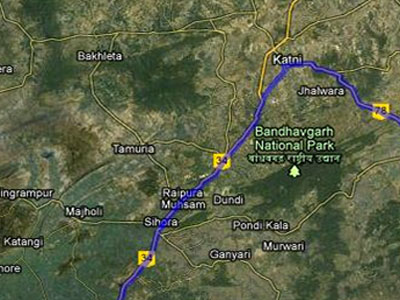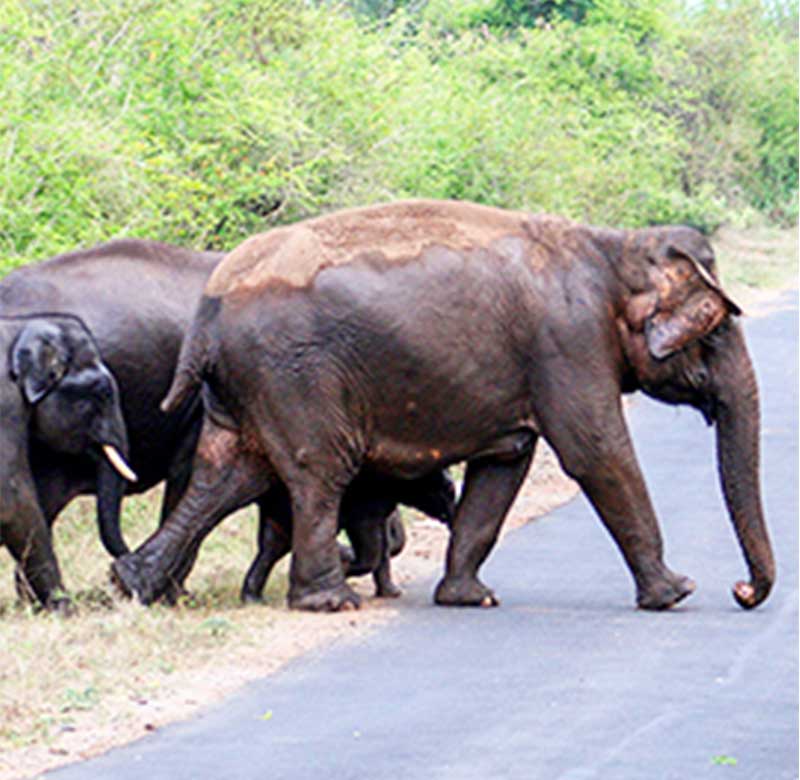Bandipur lies deep within the heart of South India’s Nilgiri Biosphere. A tropical evergreen rainforest, the park is full of Teak, Rosewood, several indigenous species, particularly fruit and medicinal trees. Sandalwood is the highly prized wood that is found in these forests and has made it vulnerable to timber poachers. However, the forest continues to thrive and is a natural habitat for several different creatures, both large and small. It’s also a superb birding area and is filled with bird song throughout the day.
Bandipur is one of the critical parks that make up the South Indian elephant corridor, and as a result, several other species including tigers and leopards move in the pachyderm’s wake. The forest teems with a healthy population of carnivores, herbivores, reptiles and birds and there is no better place to immerse oneself in the heart of the Indian rainforest than here.

Bandipur is in the southern state of Karnataka. It is part of a critical elephant corridor in the south of the subcontinent that includes Nagarhole, Bandipur, Madumalai and Wayanad.

Topography: Bandipur is thickly forested with timber, fruit, flower and medicinal trees. Teak, Rosewood and Sandalwood give way to large clumps of bamboo, Indian gooseberry, indigoberry and Flame of the Forest making it one of the prettiest forests in India. It is flanked by two rivers, the Kabini and the Moyar, while the Nugu River runs right through the park, leaving it lush and verdant. The park is situated at the juncture of the Deccan Plateau with the Western Ghats and therefore the vegetation varies widely from shrub to deciduous.
In Season:Bandipur is open to visitors year round.
Besides mammals, birds and reptiles, Bandipur is a terrific habitat for several critical species of insects. Lepidopterists have a field day here with the incredible butterfly diversity that is present in this forest.
Bandipur is a critical elephant corridor and one of the most important habitats for the survival of the Asian Elephant in India.
Tigers and leopards are the main feline predators found here. Dhole (wild dogs) and sloth bears are the other mammalian carnivores. The other main predator and a dangerous one is the mugger crocodile which can often be spotted sunning itself on the banks of Bandipur’s rivers, lying in wait for an unsuspecting creature to come down to the banks for a drink. Bandipur is also home to several raptors including Honey Buzzards, Shaheen Falcons, Crested Hawk Eagles, and King Vultures.
Bandipur has an abundant prey base of deer including Sambhar, Cheetal (Spotted Deer), the Chausingha (four horned antelope) and Barking Deer. The Gaur (Indian Bison) is another commonly spotted creature in this jungle. Wild Boar and Muntjac are abundant. The other inhabitants of the park are its snakes. Spectacled Cobras, Rock Pythons and Vipers are often spotted slithering through the undergrowth, while monitor lizards and terrapins are frequently seen.
Bandipur is excellent birding ground. Over 200 species of birds, some of which are endemic, can be found here. Waterfowl such as ospreys, cormorants, ducks, teals and herons are plentiful. Common birds like bee-eaters, kingfishers, babblers, warblers and several others are all over the place. Birds like the Malabar Trogon and the Malabar Whistling Thrush are specific to this region of South India.
The nearest airport is at:
The nearest railway station is at:

Trekking – – trek through the jungle with a naturalist and enjoy the abundance of bird and small animal life.

Coracle Ride – a coracle is a saucer shaped boat made of bamboo and raw hide. An experienced boatman will take you along river, so that you can watch elephants, birds, gharial and other animals that make themselves at home on the river.

Bird Watching – Bandipur is a birding haven for several endemic species. A trained naturalist will take you bird watching.

Nature Walk – Take a nature walk with your naturalist and learn more about the flora and fauna of the region.

Elephant Rides –Take a ride through the forest on elephant back. You’ll not only learn about the ways of the jungle, but also about the unique traits of these incredible pachyderms.

Kayaking –Kayak through the backwaters and take in life along the riverbanks.


Mountain Biking –Take a delightful bike ride along the tropical jungle trails.

White Water Rafting –Ride the rapids in an exhilarating rafting experience down the river!

Snorkeling –Don your snorkel gear and get a glimpse of life underwater. The marine biodiversity here is absolutely fascinating.
November to February is the best time to visit Bandipur. In January and February, you may even spot migratory waterfowl here.
Winters are pleasant and mild and temperatures hover around 20 degrees centigrade (in the low 70s in Fahrenheit) starting from end October until March. Summers can get very warm and dry and temperatures between March and May can go as high as 35-40 degrees centigrade (high 90s in Fahrenheit). The monsoon is extremely moist and wet as it receives the full onslaught of the south westerly monsoon and this period usually lasts from June until October.
There are several excellent accommodations and jungle lodges in the tiger’s lair and we have no doubt that you will love your jungle hideaway during your stay. We have picked out some of our favourites based on the quality of accommodation, service and value:
Bandipur Jungle Lodge: What we love…excellent naturalists who are always available to give you insight into the park’s flora and fauna.
Windflower Jungle Resort & Spa: What we love…lovely decks overlooking the jungle where animals walk right up to where you are sitting.
A great park for sighting wild Indian Dhole and Asian Elephants. There are occasions one can see these two species on the national highway as well outside the park. Healthy packs of Dhole are frequently sighted in the park.